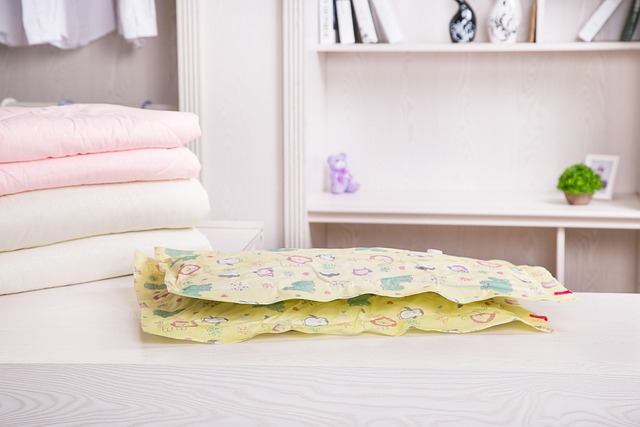Textile choices for temperature-regulated nighttime comfort
Choosing the right textiles in a bedroom can meaningfully influence nighttime temperature regulation and sleep quality. Thoughtful selection of sheets, blankets, and window coverings—paired with layout, ventilation, and organization—helps create a consistently comfortable sleep environment that responds to seasonal and personal needs.

Textile choices play a significant role in how your bedroom retains, releases, or wicks heat during the night. Beyond mattress and bedding selection, fabrics used for sheets, quilts, curtains, rugs, and even storage covers interact with room airflow, humidity, and insulation. This article explores practical textile choices and complementary room strategies—layout, ventilation, lighting, acoustics, and organization—that support temperature-regulated nighttime comfort without relying on constant mechanical cooling.
This article is for informational purposes only and should not be considered medical advice. Please consult a qualified healthcare professional for personalized guidance and treatment.
How do textiles affect sleep and comfort?
Natural and engineered fibers differ in breathability, moisture management, and thermal behavior. Cotton and linen are breathable and wick moisture, which can help the body cool naturally; wool regulates temperature by trapping air while still allowing moisture exchange; silk feels cool against the skin and can be useful for warmer nights. Performance fabrics and blends that wick sweat and dry quickly can reduce night sweats. When selecting sheets and pillowcases, consider both fiber content and weave: percale tends to be crisp and breathable, while sateen is smoother and slightly warmer.
How does layout and ventilation influence temperature?
Textiles work best within a room layout that encourages airflow. Positioning the bed to allow cross-ventilation from windows or vents, avoiding blocking vents with heavy storage textiles, and using lightweight curtains during warm months improves convective cooling. Ceiling fans, standalone fans, or strategically placed openings can move air across breathable bedding for better evaporative cooling. In colder months, heavier curtains and layered throws can trap warm air near the bed, so adaptable textile strategies—such as switching curtains or blankets seasonally—are helpful.
Which mattress and bedding choices help temperature control?
Mattress materials and bedding layers determine how heat is retained or dissipated. Mattresses with breathable constructions, natural-fill tops, or zoned ventilation channels support airflow at the body surface. Bedding choices include layering with a lightweight sheet, a breathable blanket, and a removable duvet or comforter whose warmth can be adjusted. Duvet tog ratings or blanket weights indicate insulating power; selecting a lighter tog for warm sleepers and a higher tog for cool sleepers helps personalize comfort. Mattress protectors and toppers should be chosen for breathability rather than trapping heat.
How can storage and organization support airflow and decluttering?
Cluttered spaces restrict air movement and can create localized pockets of heat or humidity. Using breathable storage solutions—open shelving, woven baskets, or ventilated boxes—helps maintain circulation. Avoid piling textiles directly on radiators or heat sources, and rotate seasonal bedding into breathable containers to prevent trapped moisture. Effective organization reduces the need for heavy fabric layers to compensate for uneven temperatures and supports quicker adjustments when opening windows or changing bedding.
What role do lighting, acoustics, and privacy play?
Window textiles serve multiple purposes: blackout curtains improve privacy and reduce early-morning light but can also add thermal insulation, slowing night-to-day heat exchange. Lighter, sheer layers can be paired with blackout panels to balance cooling and privacy needs. Acoustic textiles—rugs, heavy curtains, or wall hangings—absorb sound and can slightly alter thermal dynamics by adding insulation; choose densities that balance sound control with breathability to avoid overheating. Consider layered window treatments to tune light, noise, and temperature independently.
Can plants and sustainability improve nighttime temperature regulation?
Indoor plants influence humidity through transpiration and can slightly affect microclimate; they are not a substitute for proper ventilation but can complement a balanced environment. Sustainable textile choices—organic cotton, linen, hemp, Tencel (lyocell), or recycled fibers—often offer breathable properties with lower environmental impact. Choosing durable, easy-care fabrics reduces the need for frequent replacement and chemical treatments, which supports long-term comfort and sustainability. Laundering practices also matter: washing at appropriate frequencies keeps textiles functional without excessive resource use.
In practice, combine breathable mattress and bedding layers, seasonally appropriate window textiles, and an uncluttered layout that encourages airflow. Match textile weight and fiber to personal thermal preferences and change layers rather than relying solely on room temperature controls. Attention to ventilation, lighting, acoustics, and organized storage complements textile decisions and creates a more consistently comfortable sleep environment across seasons.





